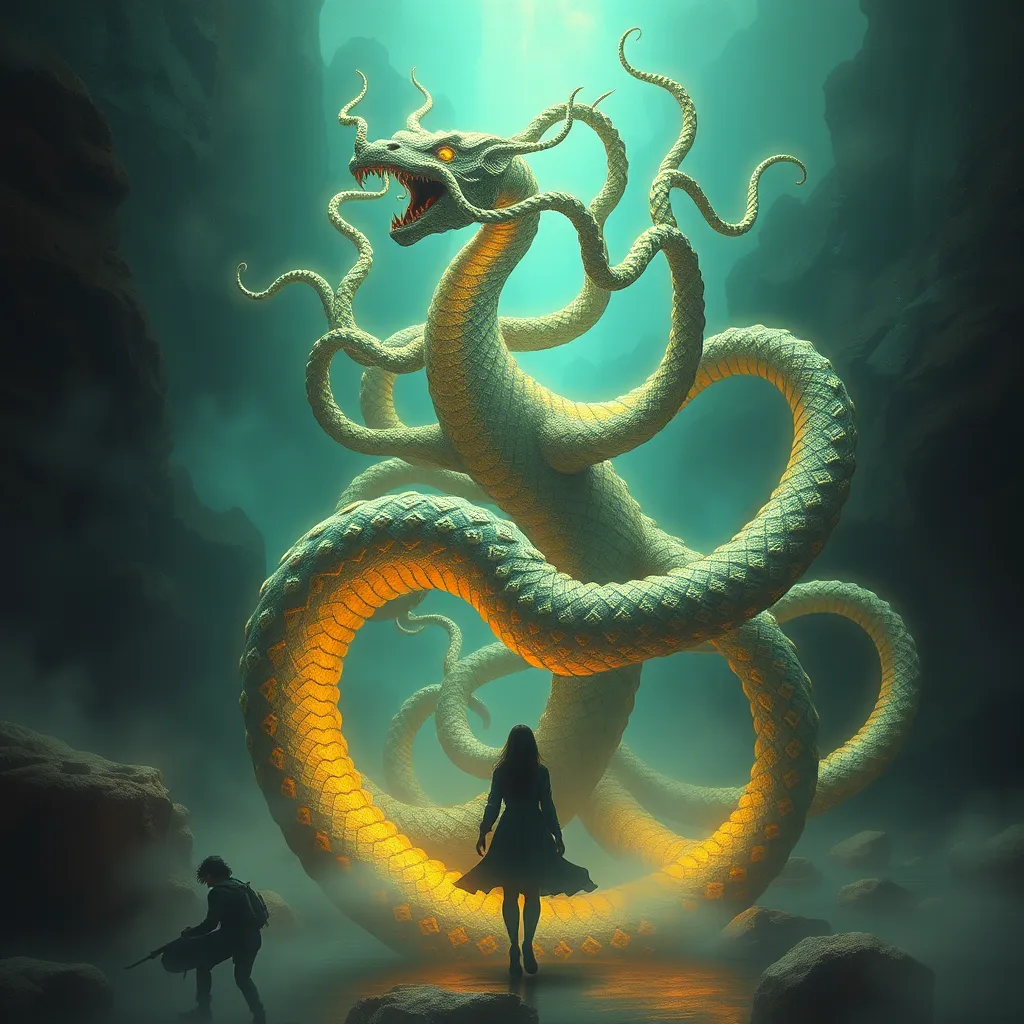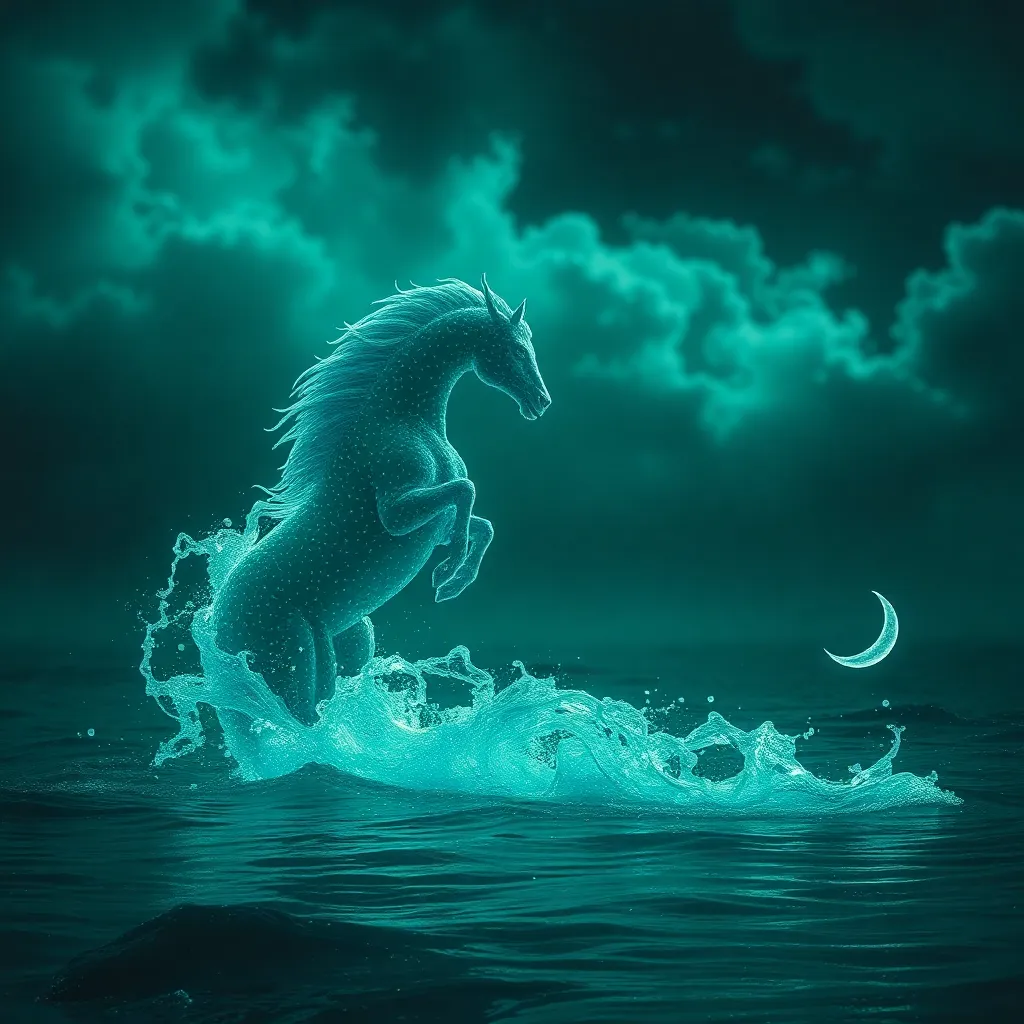The Serpent’s Embrace: Understanding the Mythical Sea Serpent
I. Introduction to the Mythical Sea Serpent
The mythical sea serpent is a compelling creature that has captured the imagination of cultures around the world for centuries. Defined as a large, snake-like creature inhabiting the ocean or other bodies of water, these beings are often depicted as both awe-inspiring and fearsome. Their significance in mythology stretches beyond mere folklore; they often embody the mysteries and dangers associated with the vast, unexplored depths of the sea.
Cultural representations of sea serpents vary widely, from the benevolent water spirits in some Indigenous cultures to the malevolent beings that threaten sailors in Norse and European tales. This diversity underscores the importance of the sea serpent in understanding human relationships with nature, especially in nautical contexts.
II. Historical Origins of Sea Serpent Myths
A. Ancient civilizations and their serpent legends
Sea serpent myths can be traced back to ancient civilizations, where they played a crucial role in shaping cultural narratives. For example, in Mesopotamian mythology, the chaos monster Tiamat was often depicted as a dragon or serpent, embodying the primordial forces of the ocean.
Similarly, the ancient Greeks spoke of the sea monster Cetus, which was often depicted in art and literature as a giant serpent that threatened ships and coastal towns. These stories highlight humanity’s longstanding fascination with the ocean and its potential for both creation and destruction.
B. The role of sea serpents in folklore
Folklore from various cultures features sea serpents acting as guardians of treasure, protectors of sacred sites, or harbingers of doom. In Scandinavian folklore, for instance, the Midgard Serpent (Jörmungandr) is a colossal creature that encircles the Earth, symbolizing the boundary between order and chaos. Such narratives served to educate communities about the dangers of the sea while also embedding moral lessons within their tales.
III. Characteristics and Symbolism of Sea Serpents
A. Physical descriptions across cultures
Sea serpents are often described with similar physical traits across different cultures, including:
- Long, slender bodies resembling snakes or eels
- Scales that shimmer in the water
- Multiple fins or limbs, sometimes resembling those of dragons
- Eyes that glow or shimmer, evoking a sense of otherworldliness
These descriptions create a consistent image of the sea serpent as a majestic yet fearsome creature, further solidifying its place in mythology.
B. Symbolic meanings attributed to sea serpents
Beyond their physical characteristics, sea serpents carry rich symbolic meanings:
- Chaos and Fear: Many cultures associate sea serpents with the chaotic nature of the ocean, representing the unknown and the uncontrollable.
- Wisdom and Protection: In some traditions, sea serpents are seen as wise beings that guard sacred knowledge or treasures.
- Transformation: The serpent often symbolizes transformation and change, reflecting the ever-changing nature of the sea itself.
IV. Famous Sea Serpent Sightings and Legends
A. Notable historical accounts and sightings
Throughout history, numerous accounts of sea serpent sightings have been documented. One of the earliest recorded sightings was in the 16th century, when sailors off the coast of Norway reported seeing a massive serpent-like creature. Such tales often spread like wildfire, igniting public fascination and leading to more reported sightings.
B. Analysis of the Loch Ness Monster and other famous examples
The Loch Ness Monster, affectionately known as “Nessie,” is perhaps the most famous sea serpent of modern times. Sightings of Nessie date back to the 6th century, with numerous photographs and eyewitness accounts fueling speculation about its existence. While many believe Nessie to be a myth, the allure of the creature endures, illustrating the power of sea serpent legends.
Other notable examples include the Cadborosaurus in British Columbia and the Ogopogo in Lake Okanagan, both of which have inspired local folklore and continue to intrigue cryptozoologists.
V. The Sea Serpent in Literature and Art
A. Representation in classical literature
Sea serpents have made their way into classical literature, most notably in works such as Homer’s “Odyssey,” where the monster Scylla appears as a multi-headed sea serpent threatening sailors. These literary references often reflect the dual nature of sea serpents as both feared adversaries and potent symbols of the sea’s mystery.
B. Influence on modern art and popular culture
In modern art and popular culture, sea serpents continue to be a source of inspiration. They appear in films, television shows, and video games, often depicted as both monstrous foes and misunderstood creatures. The representation of sea serpents in contemporary media reflects a blend of ancient mythology with modern storytelling techniques, keeping the legend alive for new generations.
VI. Scientific Explanations and Theories
A. Cryptozoology and the search for sea serpents
The field of cryptozoology, which studies and searches for animals whose existence is not substantiated by mainstream science, often focuses on sea serpents. Researchers aim to uncover evidence of these elusive creatures, examining phenomena like large marine animals or misidentified species that may have inspired serpent legends.
B. Natural phenomena that may have inspired serpent myths
Several natural phenomena could account for sea serpent sightings, including:
- Large marine animals like oarfish or whales
- Unusual wave formations or optical illusions
- Debris or floating objects mistaken for serpents
These theories suggest that while sea serpents may not exist as described in folklore, the legends are rooted in real experiences with nature.
VII. Modern Interpretations and Cultural Impact
A. The resurgence of sea serpent stories in contemporary media
In recent years, there has been a resurgence of interest in sea serpent stories, with documentaries, films, and novels drawing on these age-old myths. This revival reflects a societal longing for mystery and adventure, allowing new narratives to emerge while honoring traditional lore.
B. Discussion of sea serpents in environmental narratives
Contemporary discussions about sea serpents also intersect with environmental narratives. As climate change and ocean degradation threaten marine ecosystems, sea serpents can symbolize the fragility of these environments. They serve as a reminder of humanity’s connection to the ocean and the importance of protecting its biodiversity.
VIII. Conclusion: The Enduring Legacy of the Sea Serpent
A. Reflection on the myth’s relevance today
The myth of the sea serpent endures as a rich tapestry woven from human imagination, fear, and reverence for the ocean. Its relevance continues to resonate in modern storytelling, art, and environmental discourse, reminding us of our complex relationship with the natural world.
B. Future of sea serpent mythology in a changing world
As we navigate an ever-changing world, the legacy of the sea serpent will likely evolve. Whether as a symbol of ecological awareness or as a figure of mythic adventure, the sea serpent will remain an enduring part of our cultural narrative, inviting exploration and reflection for generations to come.




